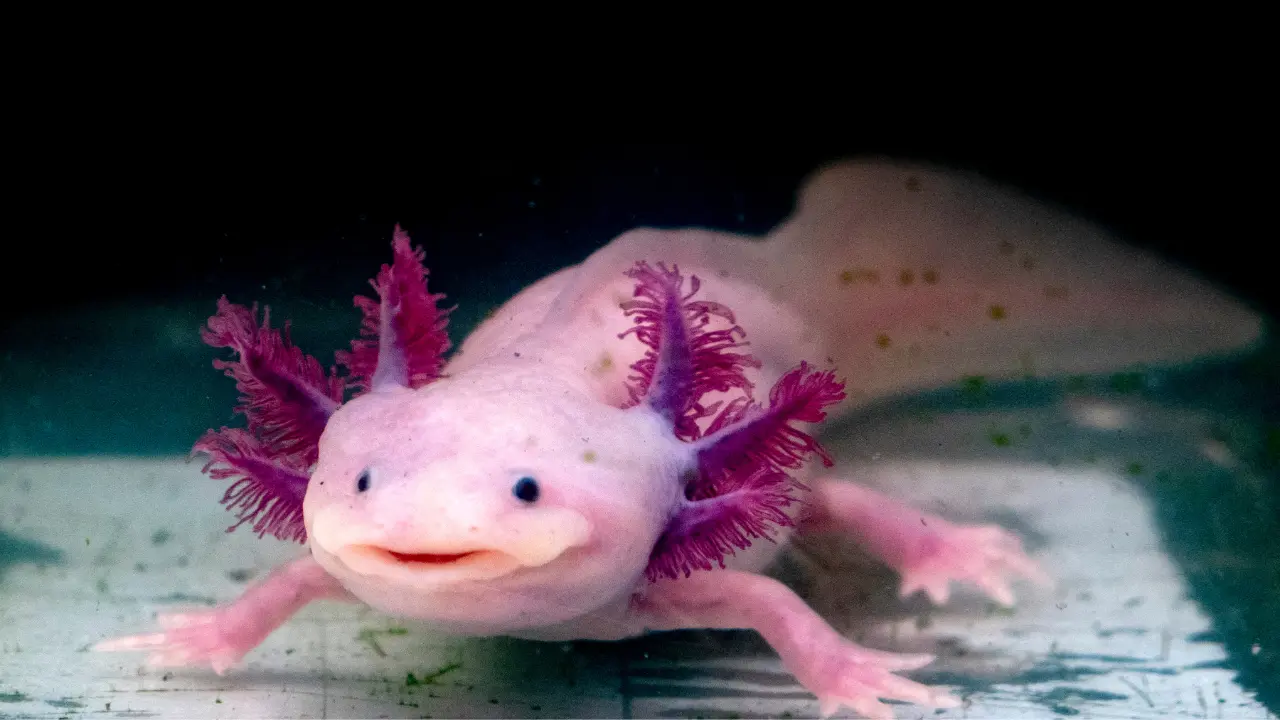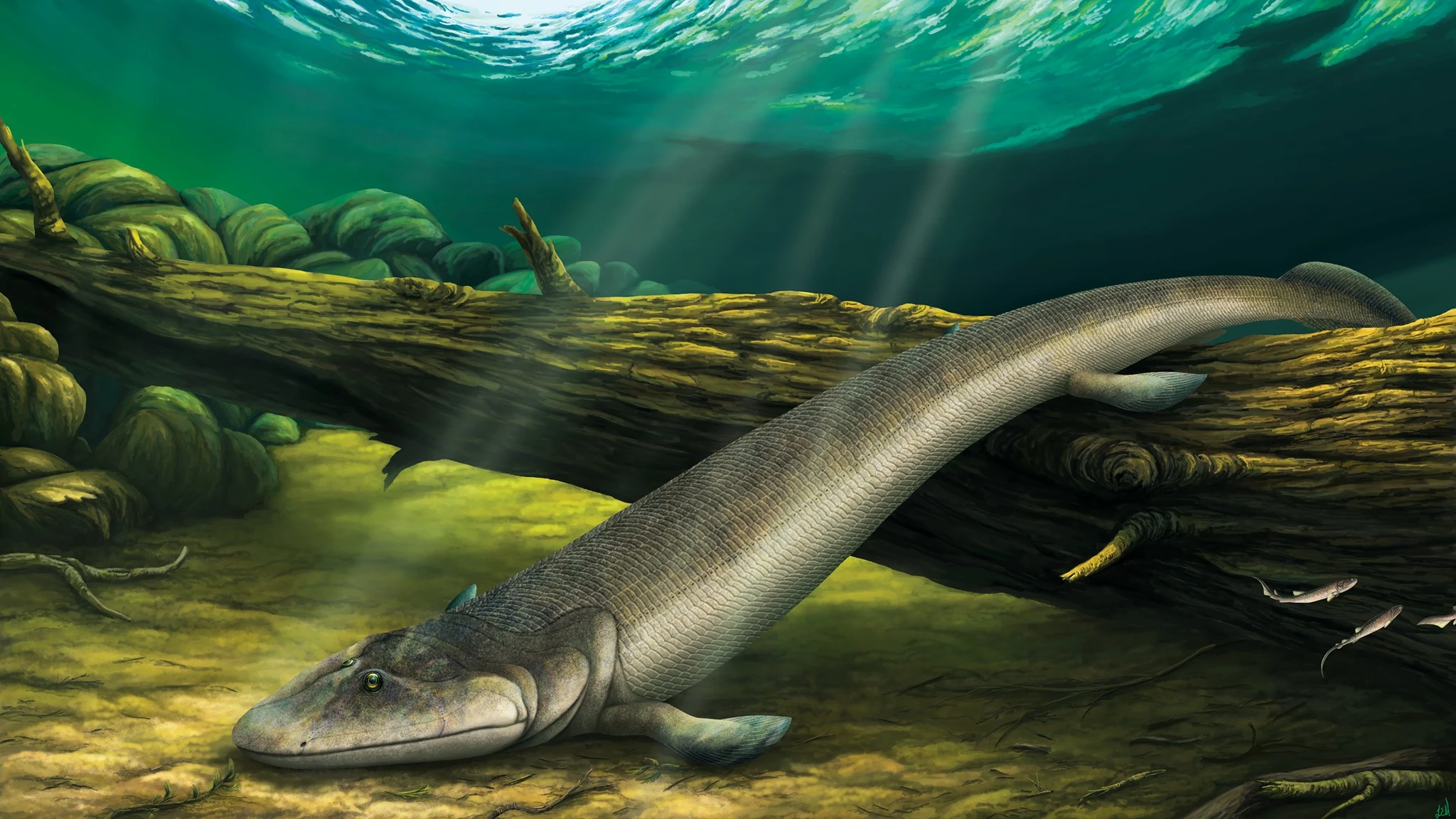Have you ever wondered what dwells in the unknown oceans? Today let’s take a look at the peculiar residents of the unknown aquatic world. You might find some fish swimming and walking in these unseen places. Yes! You’ve heard it right, there are many fish that don’t follow the convention of swimming. Rather they sprouted some legs to take a walk to the park. In this article, we will discuss the top 11+ fish with legs. So, stay tuned and get ready to blow your mind!
I know it’s a little hard to digest but don’t worry my curious fellow! we are here to help. Let me ask: have you ever wondered: Why did the walking fish cross the road? To get to the other tide.
Pretty funny right? Similarly come along as we discuss the most hilarious fish with legs and find out what they do. In addition, we will also discuss how they look and where you can find these finned fellows. Come along as we study the famous walking fish myth!
Axolotl
The axolotl is native to the ancient lakes of Mexico. It is also known as the Mexican walking fish due to its leg-like appendages. Axolotls are amphibians. This means that it can swim in water and survive on land for a certain period. In addition, axolotls have remarkable regenerative abilities. If it loses a limb or two, they’ll come back in some time!
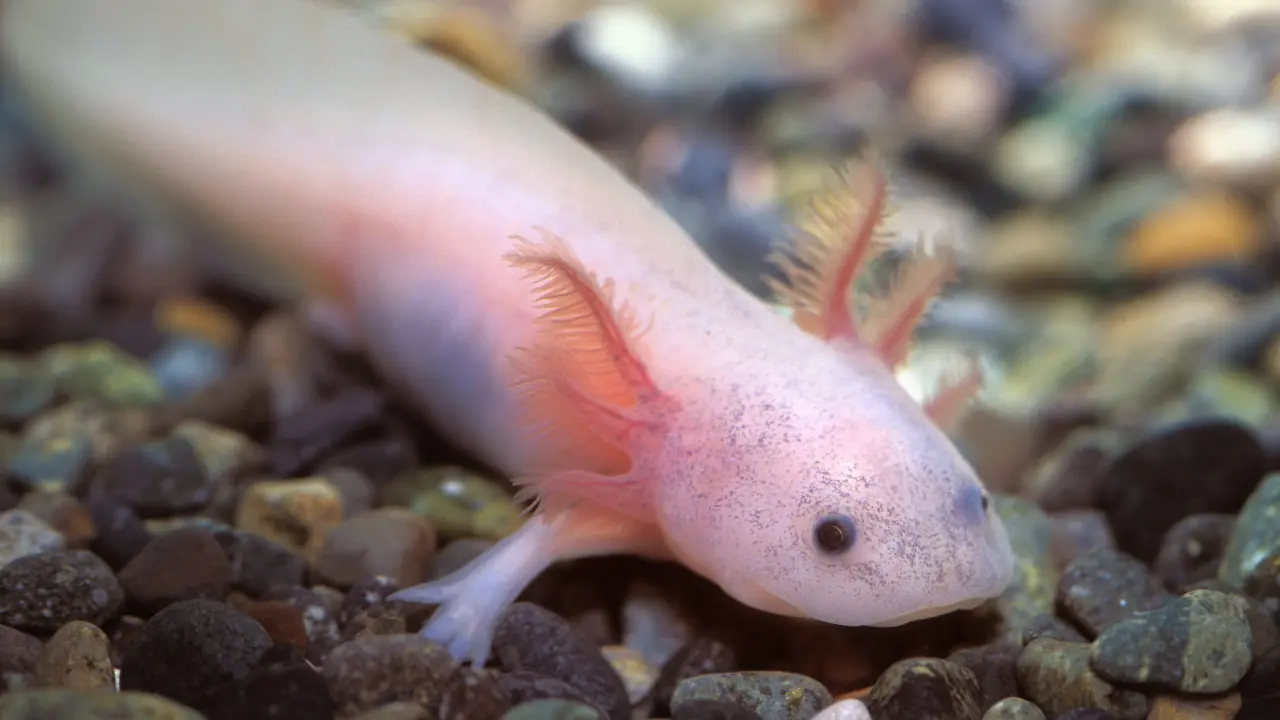
The name axolotl is derived from Aztec language Nahuatl meaning Water monster.
Contrary to its name, this is quite a pretty guy. The axolotl has a smiley face with feathery external gills. Many people call it a fish however, this amphibian is actually a salamander. It uses its long tail to propel in water and small legs to walk the grounds. Unlike other amphibians, this salamander retains an aquatic lifestyle. This means that its legs are not very functional or mature as there is no need.
The most intriguing feature of the axolotl is its long life span and ability to regenerate. An axolotl can live up to 15 years and regenerate any lost limbs. This remarkable ability is studied extensively for medicine and tissue regeneration. Note that their lifespan depends on their environment and the care provided.
Warty Frogfish
Meet the master of camouflage from the depths of the ocean. This creature blends with the sea bed because of its lumpy appearance and cryptic color. But its actual specialty is its legs that set it apart from its relatives. These are not legs, but adaptive fins that look like legs. However, they don’t just look cool but also allow the frogfish to walk the sea bed to attack prey or predators alike.

Despite the names, this fish with arms and legs isn’t a frog but belongs to the anglerfish family. These fish are found in tropical waters around the globe. They generally have mottled brown, yellow, or red bodies that make them stealthy. Apart from awesome legs, this fish has a protruding bait-like organ on its head called esca. It attracts prey and in a blink of an eye, the frogfish attacks it.
The frogfish have extremely quick reflexes and locomotion which makes them excellent predators. In addition, they also change color. This chameleon-like nature allows it to hide itself in the most unpredictable places. With all these abilities, this fish is a one-of-a-kind predator with extreme precision and agility.
Epaulette shark
The Epaulette is a small fish found in the shallow waters of the Pacific Ocean. This fish has common names like the “walking shark” because of its strolling behavior. The Epaulette shark is quite small as compared to other sharks as it is only 70 cm. In addition, this fish has a body made for camouflage. Generally, it exhibits a lighter body with darker spots which allows the shark to blend in with the sea bed.
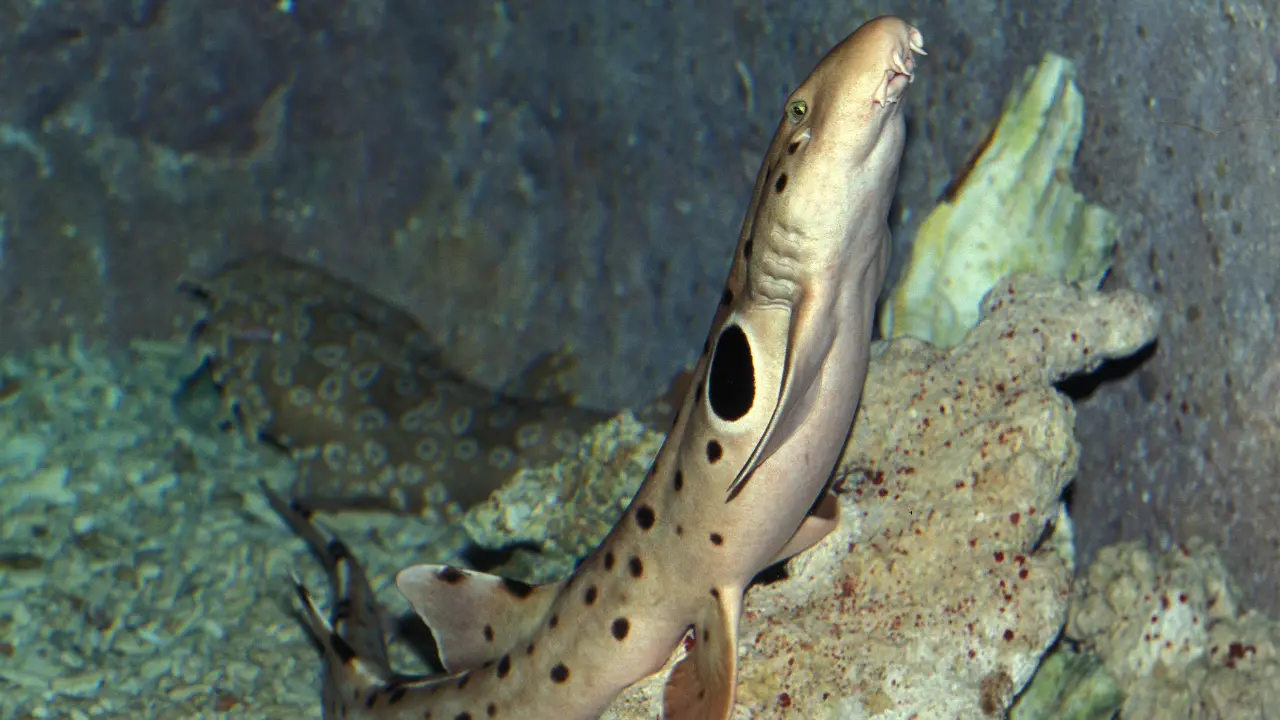
The Epaulette shark has modified pectoral and pelvic fins that resemble legs. Interestingly, these fins are very well-built and provide a strong grip. These leg-like fins allow the fish to navigate complex coral reefs. Moreover, the shark’s elongated body allows it to wriggle into small crevices.
Tiktaalik Roseae
Tiktaalik Roseae is an evolutionary marvel. This fish is estimated to have lived about 375 million years ago. Unfortunately, this prehistoric fish has been extinct for a really long time.
It was found in the Canadian Arctic in 2004. The Tiktaalik Roseae fish has all the fishy features like scales and gills. However, it also has limb-like fins with wrists, elbows, and shoulders. It seems as if the Tiktaalik Roseae is a fish with legs and arms although this is just a deception.
This fish used its limb-like fins to prop itself upwards. According to scientists, this fish could swim in water and might have taken a stroll on land every once in a while. This fish has both terrestrial and aquatic animal traits.
This fish is like a bridge between land and water animals. Its leg-like fins aren’t just for display. They rather have sturdy bones and enough strength to support the animal’s weight.
Red-lipped batfish
The red-lipped batfish is a peculiar creature found in the Galapagos Island waters. This fish has red markings near its mouth. These markings resemble red lipstick however, this fish doesn’t have lips. In addition to this feature, it also has leg-like fins. These fins are an adaptation to the fish’s natural habitat.
The leggy fins are highly modified pectoral fins. The batfish uses these legs to shuffle along the sandy substrate in search of prey. Quite walk-ative right?
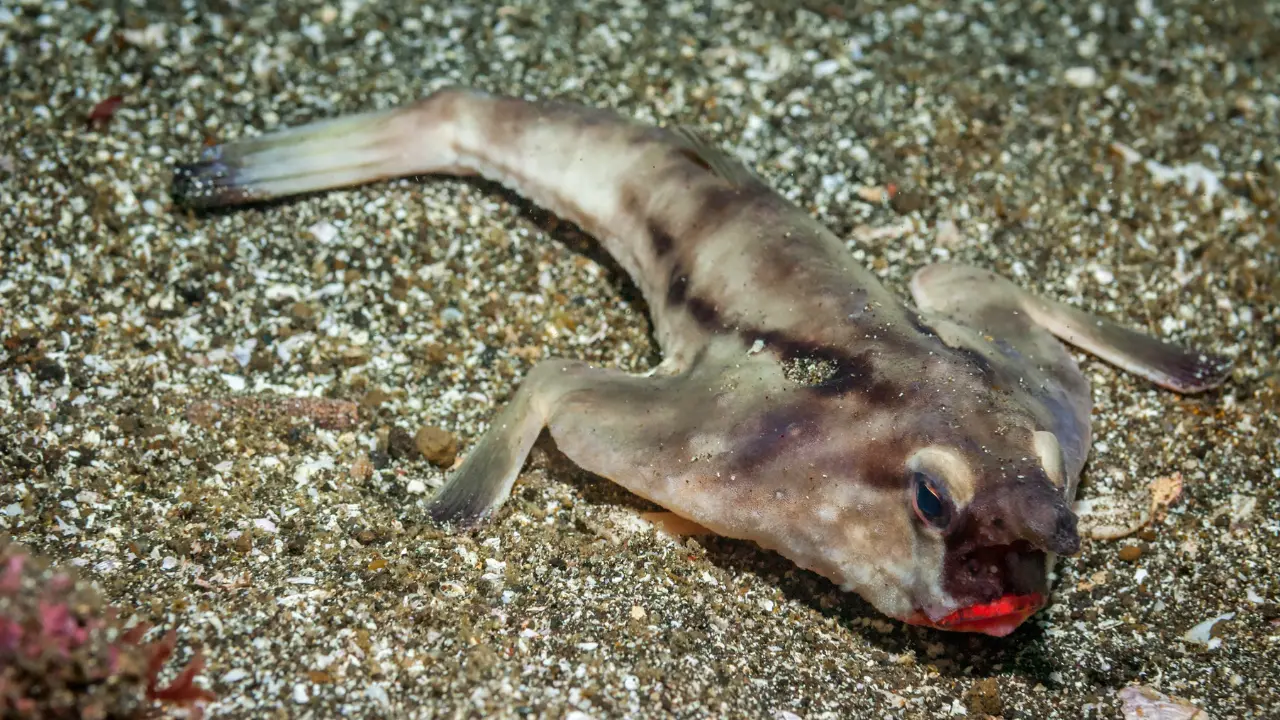
Interestingly, this funny-looking fish is more than what we expect. The red-lipped batfish is an excellent predator. This fish has a huge mouth and quickly lunges towards any prey in sight.
Red Handfish
The Red Handfish is an extremely rare fish originating from Tasmania, Australia. These cute little fish have hand-like fins. Because of these extensions, this fish is commonly called the fish with hands or the fish with feet but these are just fins. These modified fins are very helpful for walking on the ocean floor.
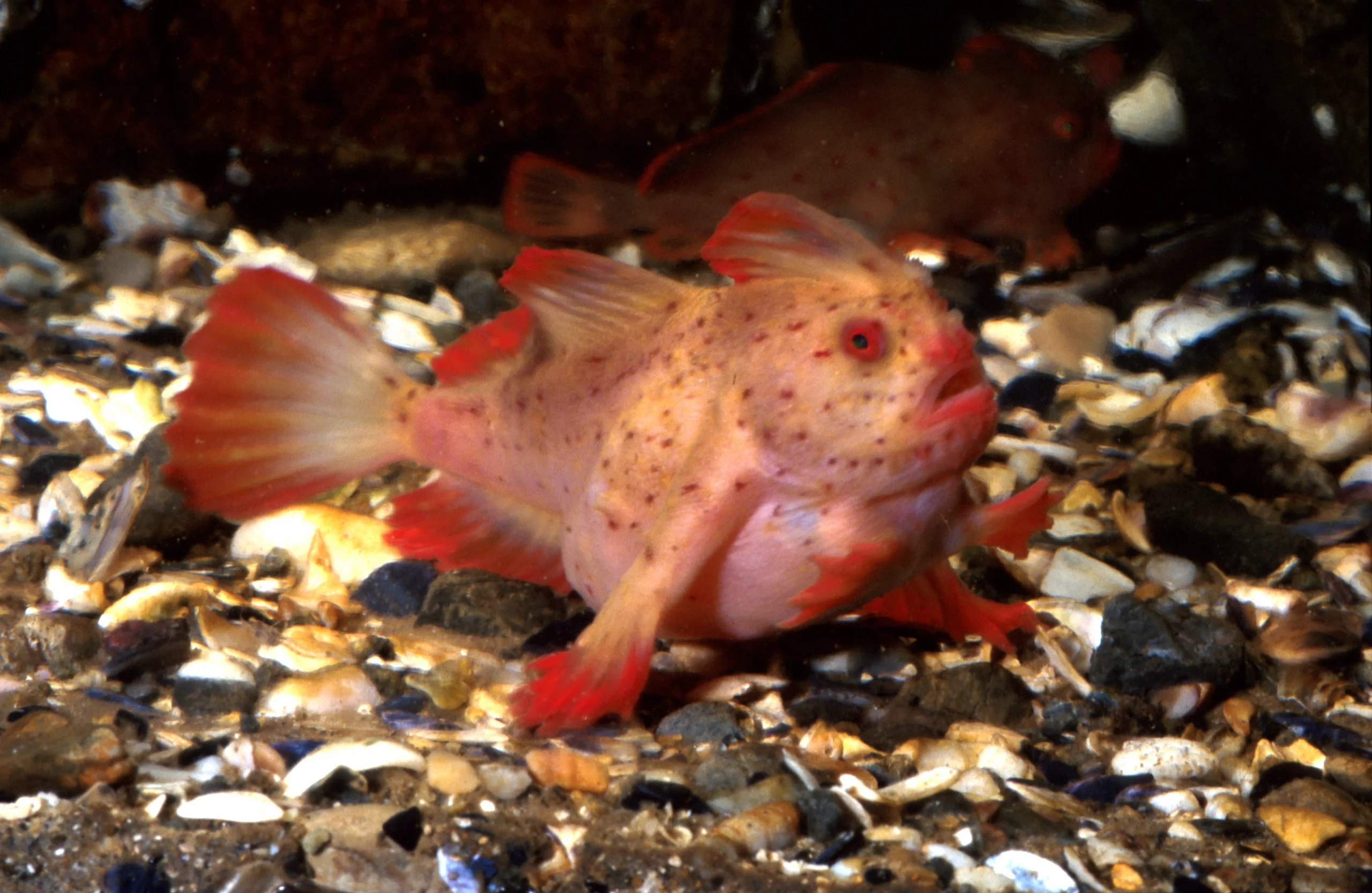
Image source: Wikipedia
This fish prefers habitats with a lot of seaweed, algae, and rocky bottoms. The Red Handfish is a slow-moving fish so rather uses its hand-like fins to crawl on the substrate. This sort of movement helps them find food on the seabed. This movement is effective for finding food but it makes them vulnerable. After all slow-moving fish are quite an easy catch for predators!
Due to these reasons, there are only a handful of these fish. This makes them one of the world’s rarest fish.
Snakehead fish
The snakehead fish is native to parts of Asia and Africa. These legged fish have interesting features like the ability to breathe air and leg-like fins. Moreover, these fish have long bodies with sharp teeth. The snakehead fish can walk in shallow waters and some distance on land, thanks to their leg-like fins.
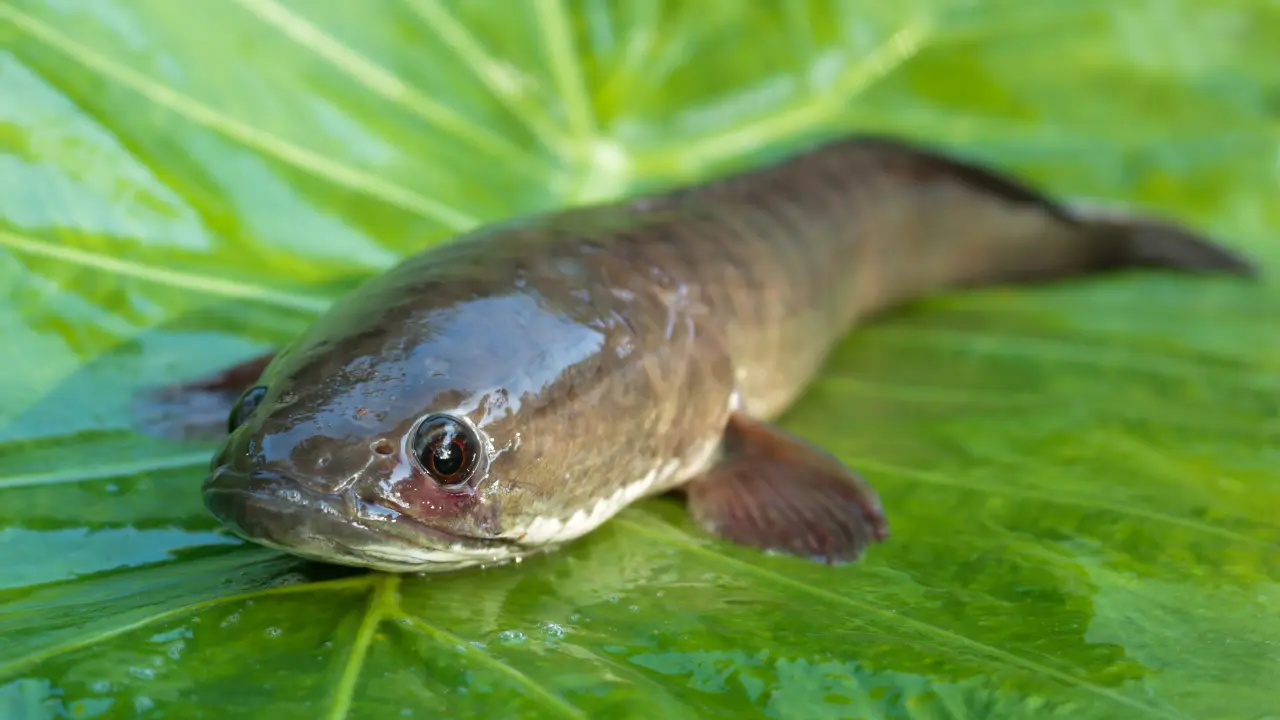
Their pectoral fins are placed on the front side of their body. Due to this, they have an amphibian-like appearance. These pectoral fins have strong muscles that allow them to push themselves forward. Moreover, their bodies wriggle on the surface which increases movement. Because of these varied movements, snakehead fish can adapt to many environments. Whether it’s a stagnant pond or a fast-flowing river, the snakehead fish can manage easily.
This adaptation and their predatory nature are a concern for their environment. It’s important to maintain the biodiversity of their ecosystem as they have an appetite and nature to hunt more than required.
Lungfish
Lungfish is an ancient creature that’ still thrives in earth’s waters. These fish have a unique respiratory system that allows them to breathe air from the surface. They also have gills to breathe underwater. This adaptation allows them to manage in oxygen-deprived waters.
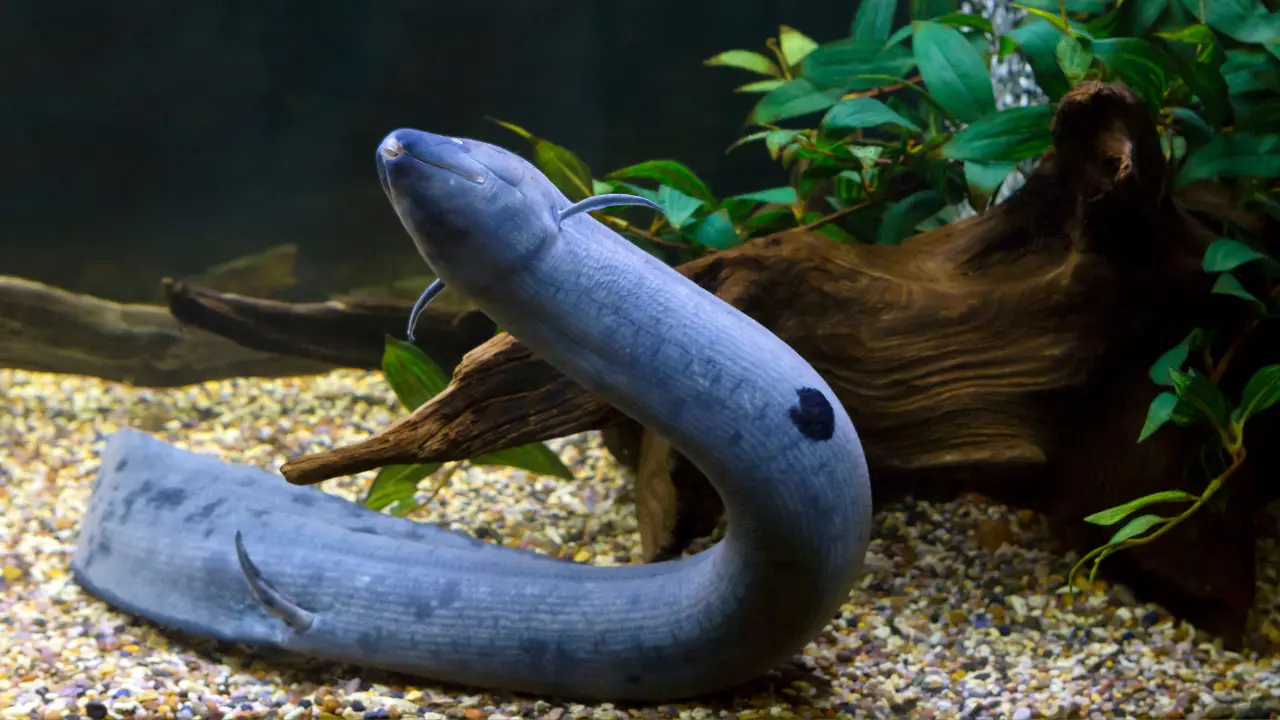
Another fascinating feature of the lungfish is their stubby limb-like fins. They have pectoral and pelvic fins that act as legs. These leg-like fins are mainly used for strolling on the bottom of their habitat to find food. These fins also help the fish in swimming so they aren’t just leg-like, they are a combo of both legs and fins.
Despite ancient existence, these fish still inhabit freshwaters of South America and Australia. Studying the lungfish provides an amazing insight into the evolution of the underwater world.
Mudskipper Fish with Legs
Mudskippers are unique fish that thrive on both land and water. These are amphibians. This fish has specialized leg-like fins that allow them to walk on land. Interestingly, these fins are very strong hence they easily support the fish’s weight.

These leggy fins are the fish’s pectoral fins which have evolved. Mudskippers use these fins to push them forward and love on dry land. These fins are also used to dig hideouts. During low tide season, mudskippers use these legs to retreat to the shore to avoid predators
This fish has remarkable adaptability, surviving in places where other fish can’t.
Sea Robin
The Sea Robin is a walking fish from the Atlantic Ocean. This fish has a distinct appearance and behavior. One of its most notable features is its strong pectoral fins that allow it to walk on the ocean bed. These leg-like fins will enable the fish to forage food and dwell in the sandy bottoms of its habitat.
These leg-like fins are like no others! they are equipped with sensory organs to detect crustaceans, mollusks, and small fish. Pretty unique isn’t it?

As this fish moves along the sea bed, its fins stir up the substrate to reveal hidden prey. This unique behavior allows the sea robin to live in the benthic habitat. It is usually found in coral reefs at depths of about 100 meters.
Unlike other fish, the sea robin uses its fins to attract mates for breeding. In addition, it plays an important role in the ecosystem as both predator and prey.
Walking Catfish
If you’re wondering: do catfish have legs then this is for you. The Walking Catfish is a unique freshwater fish species native to Southeast Asia. Despite its name, it doesn’t walk on land, however it can walk on moist land. That too is possible for only short distances. This is possible due to their specialized pectoral fins that act like legs. The leg-like fins allow this fish to move between water bodies during flood seasons. However, these legs aren’t specialized for walking on dry, hard ground.
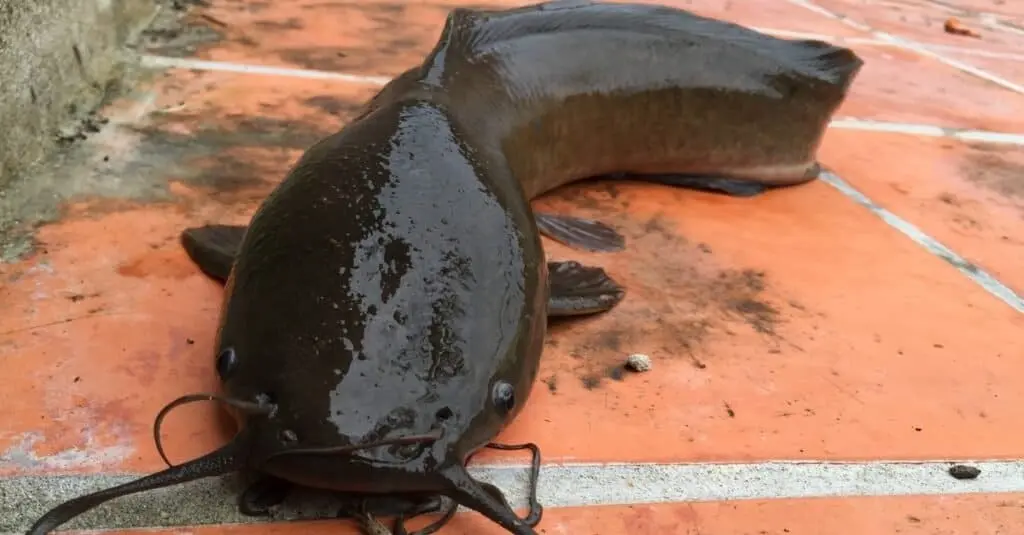
Image source: A-Z animals
Interestingly, this catfish with legs has a special breathing system. Because of this adaptation, the walking catfish can stay out of water for a long time. Moreover, their swim bladder allows them to gulp air when oxygen isn’t available in the water
These adaptations allow the walking catfish to dwell in both aquatic and terrestrial regions. However, this fish needs to stay in a normal environment to avoid desiccation.
Coelacanth
The Coelacanth is a prehistoric fish. It is commonly known as the “living fossil” because of its ancient nature. The Coelacanth had sturdy leg-like fins that allowed it to push itself forward. This fish also had a bony structure that combined with these leggy fins, provided excellent maneuverability in the deep sea.
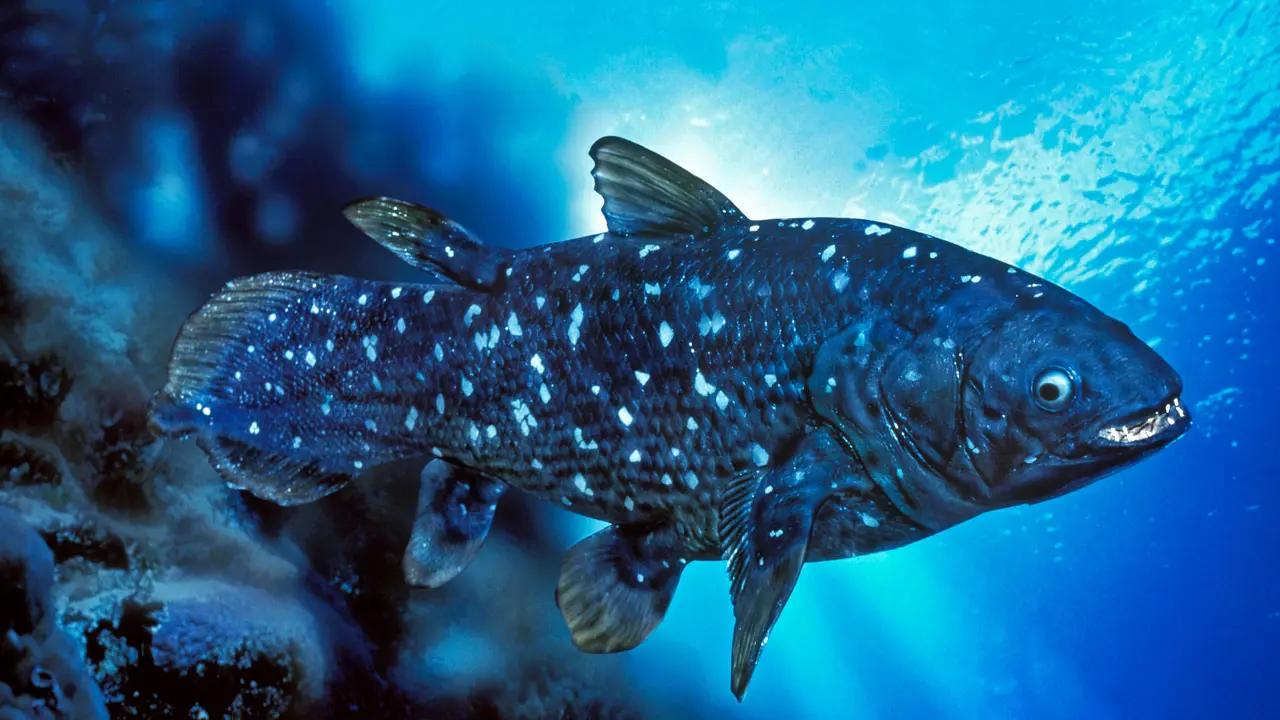
Unlike other fish, the Coelacanth had bony and muscular fins like tetrapod limbs. According to scientists, these limb-like fins allowed the fish to navigate complex waters. However, this fish did not walk on land but used its fins to hunt effectively in the underwater world.
Unfortunately, this evolutionary marvel is long gone for about 400 years! that’s what people thought. This fish reemerged out of nowhere in 1938. This proves that there is much hidden from the naked human eye. All in all, this fish is a marvel of perseverance and evolution.
FAQ’s
How many fish have legs?
There isn’t a specific number of fish that have legs. In general, fish don’t have legs, these leg-like extensions are actually their fins that have been modified due to adaptation.
What are Axolotls and can they walk?
Axolotls are amphibians. This means that it can swim in water and endure for a short while on land. This is not a fish but rather a salamander. It has limb-like appendages that help it walk. However, it prefers an aquatic life. Despite its moniker, this guy is really attractive. The axolotl has fluffy exterior gills and a happy expression.
What are legs on a fish called?
Fish do not have legs. They only have fins that in some cases, modify to act or look like legs. However, in all cases, these appendages are considered fins. Mostly these modified legs-like extensions are the pectoral or pelvic fins.
Do fish have legs?
No! Fish don’t have legs however in some fish, the fins adapt in such a way that they resemble legs. This as a result leads to the dilemma that maybe a fish has legs although it is a misconception.
Do fish have 4 legs?
No! Today’s fish don’t have legs. However, scientists assume that fish with legs have evolutionary ancestors that had 4 legs, like all tetrapods. Modern fish only have fins that in some cases resemble to work like legs.
Conclusion
In conclusion, we discussed the top 11+ fish with legs. In this article, we discussed why these fish have long leg-like fins and what are their uses. Additionally, we also discussed how these fins affect the fish’s behavior. In essence, these leggy fins are a result of evolution because of necessity.
If you have any thoughts or queries, shoot us a message in the comments below!
All in all, we discussed the 11+ different fish with legs. However, this journey is far from over. So, keep up with our articles to uncover the amazing underwater world and its secrets!

